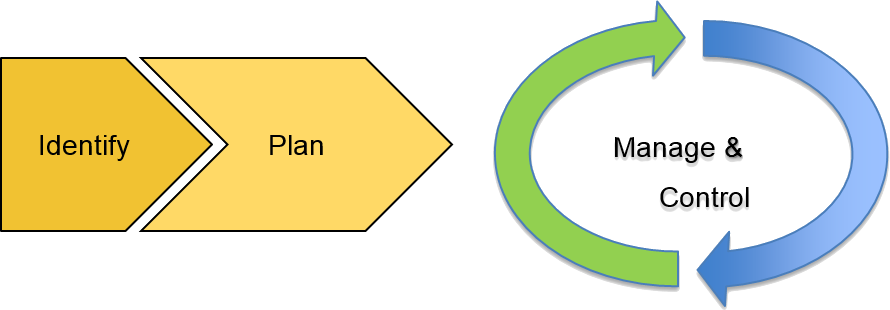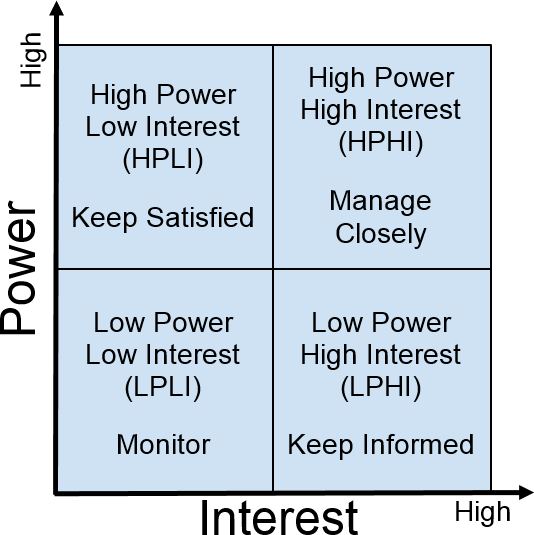Phases of Stakeholders Management

USA
Thank you for reaching out to Sigma Software!
Please fill the form below. Our team will contact you shortly.
Sigma Software has offices in multiple locations in Europe, Northern America, Asia, and Latin America.

USA

Sweden

Germany

Canada

Israel

Singapore

UAE

Australia

Austria

Ukraine

Poland

Argentina

Brazil

Bulgaria

Colombia

Czech Republic

Hungary

Mexico

Portugal

Romania

Uzbekistan
Dear reader, welcome to the engaging world of Management and hope you will enjoy this article dedicated to Stakeholders Management.
Let us start with providing the definition of the Project Stakeholder Management. I find really meaningful the definition given in the PMBOK: “Project Stakeholder Management includes the processes required to identify the people, groups, or organizations that could impact or be impacted by the project, to analyze stakeholder expectations and their impact on the project, and to develop appropriate management strategies for effectively engaging stakeholders in project decisions and execution.”
Stakeholders Management is interesting by its nature, because it involves many amusing activities. PMBOK defines a standard of Stakeholders management that includes the following phases of Stakeholders management:

The first phase is aimed at understanding and determining main stakeholders. This can be achieved with analysis of people involved and 1-to-1 meetings with contact persons. During the identification, we need to create stakeholders registry with all people or groups of people that we have managed to identify. Along with it, we need to classify them according to organization’s standard of Stakeholders classification.
In the second phase, we review the gathered information about Stakeholders and create our plan on how we will work with them. We determine how much every identified Stakeholder is interested and affected by the project and define channels, frequency, and format of our communication with them. This planning is performed for every Stakeholder we have identified.
After that we proceed to the Manage and Control phases. They are connected, since we need to communicate according to our plan and track Stakeholders until the end of the project. This is required because Stakeholders may change their relation to the project and we should react and update our plan accordingly as well as the methods we use to communicate with them.
There are quite a lot of classification techniques, the most popular are Power/Interest grid, Power/Influence grid, Influence/Impact grid and Salience model. Let us review Power/Interest grid, as it is one of the simplest and efficient technics. The main idea behind it is to put every Stakeholder into the grid, where scale x is Interest and scale y is Power. This way we will classify all Stakeholders into four regions – High Power High Interest (HPHI), High Power and Low Interest (HPLI), Low Power High Interest (LPHI) and Low Power Low Interest (LPLI).

Basing on this classification, we define how we will work with Stakeholders in these groups:
HPHI (High Power High Interest) – we need to closely manage them, as they are our main allies; they will support us with the approval of the approaches or decisions that we make. We need to understand in detail what exactly they want from the Project and make everything possible to satisfy them. We should communicate with them a few times a week. Prefer face-to-face, video and voice calls, chats, detailed status reports and Demos with active listening as main communication techniques.
HPLI (High Power and Low Interest) – these people are next in our Stakeholders priority list as they have enough power to influence key decisions, but luckily or not, they are not that much interested in the Project to go into tiny details. Usually, they are those who put ‘Veto’ on key decisions in the last moments. We should understand their needs and target them as the second priority. Prefer voice calls, chats, and emails with high-level status reports to communicate with them, pay attention to what makes them unhappy and target it.
LPHI (Low Power High Interest) – these people are interested in the Project, but have no power to influence key decisions. They are mostly willing to help with achieving the Project objectives. We should build good relations with them and they will provide good feedback. We can use all sorts of non-official communication techniques to work with them, starting from chats on coffee point, ending with non-official emails with detailed discussions. They like to be involved in details of the Project, so we should call them to Demos, forward detailed Project status emails, etc. and they will pay us back.
LPLI (Low Power Low Interest) – these are the people that are influenced by the Project, but they have neither power nor interest to help. However, we need to keep them informed on the Project activities and achievements. With time, some of them can move to other groups, when they understand how they are affected by the Project. Prefer high-level status updates, public notifications using emails or quarterly all-hands meeting.
The important item to note is that Stakeholders registry is not a fixed list, people from this list can move from one category to another, and we need to identify and update the way we work with them. One of tricky cases is passing the Project to support. Originally, support people are in LPLI, but all of a sudden, they can become HPHI and will put their 5 cents from that point everywhere or may refuse to take the Product for support at all.
Another aspect of Stakeholders management is information presentation. The tricky point is that you may be preparing this great status report, on which you have spent 8 hours of your precious time, but the Stakeholder you have targeted does not understand it at all. The reason for that may be that you have chosen a wrong status presentation technic. What I mean here is people are different and perceive information in different ways. Some prefer bright visual graphs, while others need to understand the reasons behind each decision. This is your task as a presenter to fit your presentation to the audience. How you can do it? If you target a specific person, you can suit your presentation to the specific perception type of this person. Otherwise, if you need to talk to a large group of people, you add something for each type to your presentation. Then the following questions arise: what perception types are there, how to identify people of each type, and how to adapt your presentation for them.
All people can be split into four main groups according to their perception type: Visual, Auditory, Kinesthetic, and Digital. Let us go deeper into every of the groups above.
 Visual – they read information from pictures and picturize things. They want to see and expect that you will show them results. You can identify them by the key words, like “Do you see …?”, “Show me …?”, “Let’s look into it.” and any other words representing visual perception of information – see, look, show, illustrate, color, bright, sparkle, radiate.
Visual – they read information from pictures and picturize things. They want to see and expect that you will show them results. You can identify them by the key words, like “Do you see …?”, “Show me …?”, “Let’s look into it.” and any other words representing visual perception of information – see, look, show, illustrate, color, bright, sparkle, radiate.
From their side, they prepare colorful and bright presentations. Making beautiful for them means add more color; make it visually more nice to look at. To target these people, use various kinds of charts or graphs in your presentation, use styled tables with different rows colors, create different schemes and pictures, add team photos or screenshots, etc.
 Auditory – they perceive information through listening. They want to hear and hear a lot. They prefer audio calls, phone calls, audio records, etc. In their communication, they use phrases like “Do you hear me?”, “Let’s go and talk …”, “Listen, …”, “I like the way it sounds.” and similar words – talk, hear, speak, have a word, sound, volume, turn it up, tempo.
Auditory – they perceive information through listening. They want to hear and hear a lot. They prefer audio calls, phone calls, audio records, etc. In their communication, they use phrases like “Do you hear me?”, “Let’s go and talk …”, “Listen, …”, “I like the way it sounds.” and similar words – talk, hear, speak, have a word, sound, volume, turn it up, tempo.
They want to hear the status report, there might be no video, no pictures, but all the information should be talked through. Making beautiful for them mean to make it sound nicely, so it will be a pleasure to hear. Add more text, so that they can read it.
 Kinesthetic – they like to feel something with their hands. They want to have ability to use the product; they want to try working with it. They can be recognized by the following phrases “Can I try it?”, “Let’s go and try it.”, “Have you tried …”, “When can I try it?” and similar words – feel, touch, hold, get a handle, grasp, warm, cool, get in touch with.
Kinesthetic – they like to feel something with their hands. They want to have ability to use the product; they want to try working with it. They can be recognized by the following phrases “Can I try it?”, “Let’s go and try it.”, “Have you tried …”, “When can I try it?” and similar words – feel, touch, hold, get a handle, grasp, warm, cool, get in touch with.
As personal belongings, they like things that are nice to touch, like a leather wallet. For them we need to have a working demo environment where they can use the product themselves and make sure that it will bring nice and cool experience. Making beautiful for them means to make it nice to get in touch with, that will leave warm memories. For people with kinesthetic perception, you need to describe user experience, the benefits and positive features it has.
 Digital – this type of people like to make sense of things and understand them. Do not mix them with Visuals, as Visuals do not like tables. They can be identified by the following phrases “Please create a table for that”, “Let’s analyze that”, “Have you tried to understand …?” and similar words like – sensible, understand, calculate, analyze.
Digital – this type of people like to make sense of things and understand them. Do not mix them with Visuals, as Visuals do not like tables. They can be identified by the following phrases “Please create a table for that”, “Let’s analyze that”, “Have you tried to understand …?” and similar words like – sensible, understand, calculate, analyze.
People with Digital perception do not look for beauty in logic. They try to identify cause and result and don’t attach mush significance to everything else. When preparing a presentation for Digitals, make sure to find out the root causes of everything or be ready to answer many questions, so that they could get all the details sorted.
Some of the commonly used phrases for different perception types of people:
Visual | Auditory | Kinesthetic | Digital |
| That looks great … My view is … I see what you’re saying … Picture the situation Watch this … I like the look of it. My vision is … I like the sight of that. Show me … | That sounds great … Listen, … I hear what you’re saying. I heard that … It rings a bell. It’s good to hear from you. I’m listening … I’m all ears. | That feels great … I feel … Kinesthetic My instinct is … It’s comforting that you care about me. I am very touched. I feel safe with you. I am a hands-on person. I felt emotional … How do you feel about … | That works well … I think … I understand what you’re saying … It makes sense … It’s logical … Figure this out … Prove it It stacks up … I can process it. I’ll put it on the list … My plan is … |
In addition, the cultural aspect of people’s origin and current living brings its impact on Stakeholders expectations. People from USA and Israel are focused on short-term results with clear detailed statuses. They make quick decisions and change them with the same speed. Keep a focus on them or you will lose the track. In contrast, people from Asia are focused on long-term things and will not give you quick feedbacks or answers. They need to make decisions and it takes time, but you can rely on every decision they have taken, and it will not change within the next year or two.
Europe has quite a mix of different cultures, so we have to understand more precisely every specific person we work with. For example, German people are more bureaucratic, but like distributed responsibility, a direct, clear, and participative communication and style of meetings, everyone has to say a few words. They demand results in a similar way as USA people do. Decisions making takes time, but you can rely on them for a long while. Swedes strictly keep the work-life balance, even give more preference to enjoy their family life, conflicts are resolved by negotiations and compromise where everyone should agree, resulting in long time needed to have it done. We should understand people’s culture and work with different people in different ways, so it will be comfortable for them to work with us.
So far, working with Stakeholders has its part of joy and excitement. It will never leave you bored and will bring new issues to solve from phase to phase of your Project. Have fun and enjoy your Projects!

Yuriy is in IT industry since 2005, on managerial positions since 2011. He is a Certified Professional Scrum Master and Certified Professional Product Owner. He has experience with the following business domains: Telecom, Video Streaming, Publication, Skype. Raised from development with background in C++, Java, Python. Yuriy was responsible for many outsourcing teams in software development and application maintenance. He took part in establishing Agile practices in teams and at scale of distributed teams with SAFe. Yuriy has a Pre-MBA certification.


A Software Bill of Materials (SBOM) is becoming one of the most important documents in modern software development. Still, many organizations struggle to create...

As cloud sovereignty becomes a strategic priority across the EU, Sigma Software applies its deep expertise and extensive experience to contribute to the develop...

Data is everywhere, yet its payoff isn't always there. Many IT leaders struggle with scattered analytics, rising storage costs, and unclear returns.We face...
Would you like to view the site in German?
Switch to German